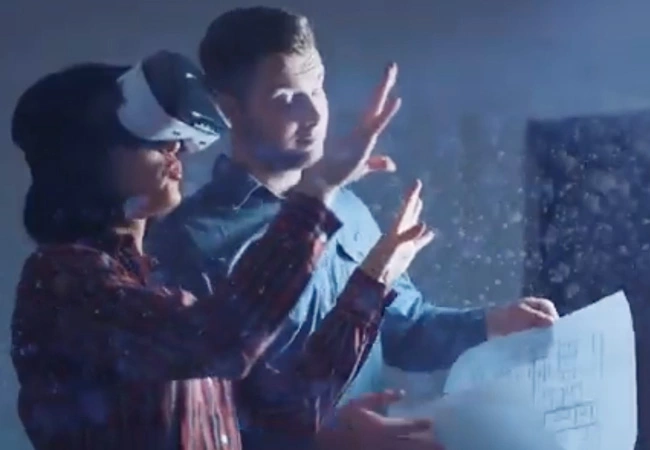Corporate Headquarters
475 Metro place South, Suite 120, Dublin, OH 43017, USA,
Direct: +1 614-707-5225
Global Technology Center
SKCL Infinite Towers, A21 & A22, Thiru-vi-ka Ind. Estate, Guindy, Chennai-600032, India,
Direct: +91 (44)-2250-1363
Leverage XR to Develop Skills and Enhance Knowledge
Start Your Free TrialIntroduction
AR and VR provide organizations the opportunity to enhance their workforce training for their employees by making training more engaging, fast, and cost-effective. According to a Deloitte study, 88 percent of medium-sized companies are already using AR or VR in various compacities. Companies currently using AR and VR include Walmart, JetBlue Airlines, Intel, and Verizon. Therefore, many companies are starting to use AR and VR to enhance their workforce training and ensure their employees are properly trained and confident in their position.
How to Use AR & VR in Workforce Training
AR adds interactive, digital elements, and 3D graphics to the real-life environment through phones, tablets, laptops, and headsets. You can use the devices to manipulate computer-generated objects in the 3D environment. While on the other hand, VR subversives people into complete virtual worlds, and they can perform different actions and manipulate objects. Thus, AR and VR can be used in workforce training to improve job skills in a low-risk environment by practicing multiple scenarios to prepare employees for their job in real life.
For instance, if a person is training to be a firefighter, they can use AR or VR to simulate different scenarios, thus reducing the risk of seriously getting injured. In addition, AR and VR intimate all aspects of real life so that the simulated environment will feel real to the person in training, and they will know what to expect and do in their position.
 Improves Job Performance
Improves Job Performance Safe Training Environment
Safe Training Environment Enhance Career Skills
Enhance Career Skills Cost-Effective
Cost-Effective Improves Workplace Safety
Improves Workplace Safety Soft Skills Training
Soft Skills Training
Benefits of AR & VR in Workforce Training
There are several benefits to using AR & VR when it comes to workforce training. Some benefits are that AR and VR are cost-effective and safe.
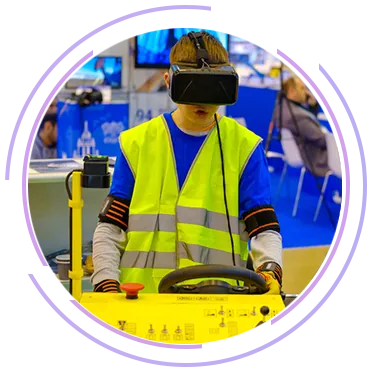
Safety
AR and VR provide safe training that allows employees to practice different scenarios they may experience. Also, it allows employees to make mistakes, learn, and see the consequences of their actions without real injuries or fatalities. According to an article, in 2019, deaths on the worksite amounted up to 100 deaths per week, which is about 15 deaths per day in the US. Thus, AR and VR can provide proper and efficient employee training that will cause fewer mistakes and deaths on the worksite.

Cost-Effective
With AR, organizations can use tablets or smartphones to conduct training. On the other hand, with VR, companies must purchase headsets and controllers, which may cost more upfront, but it is an investment that will save organizations money on training in the long term. Especially as the equipment is reusable. In addition, AR and VR are cost-effective as organizations do not have to hold long training sessions or use any of the companies’ resources. For instance, the company Sprouts needed to hire thousands of employees due to the pandemic. To make training go faster and safer, the company used VR to train their new employees, and it reduced training from 4 hours to 45 minutes. This helped save the company’s time and money spent on training.

Improves Job Performance
AR and VR tend to improve job performance on the job. This is because AR and VR help remove risks and distractions commonly found in traditional training methods. The use of VR and AR also produces high retention rates as employees remain engaged during the training process. According to research, using VR for training results in retention rates of up to 80 percent for one year compared to 20 percent just one week after traditional training. Therefore, with AR and VR training, employees are more likely to retain information from the training for much longer and achieve tasks faster as they are less distracted and more engaged, improving their job performance overall.
Using AR & VR in Training
AR and VR have held promise for training applications for years. By simulating, modifying, and enhancing real-world situations, these tools allow companies to have greater control over the “environment” in which training takes place. This could mean creating simulated customer interactions or road conditions, for example. The ability to modify what trainees are experiencing relative to the actual environment saves both time and money and can greatly increase safety.

Organizations who decide to use AR and VR for their employee training are modernizing their training as they are leaving behind traditional methods of presentations, in class training, one-on-one training, etc. Instead, organizations are becoming modernized with technology like AR and VR. With the use of AR and VR, organizations can train their employees in a safe environment through simulations and create different scenarios that their employees may experience
Additionally, employees who are trained with modernized training that use AR and VR are more likely to learn faster and better. According to an article, some retailers have used VR simulations to train their employees in managing departments or annual challenges such as Black Friday. As a result, some companies reported that employees appeared to retain and learn more than traditional methods. Thus, modernizing employee training can improve employee performance overall.

AR and VR help improve employees’ workforce skills by providing them the opportunity to develop their skills through visualization and immersive experiences. For example, employees can use AR or VR to practice and advance their skills in complex machinery. This will help them learn how to operate the machinery better and be confident when they are doing it in reality. Additionally, AR and VR help improve employees’ soft skills as well. In a recent survey, 59% of hiring managers and 89% of executives reported difficulty finding candidates with requisite soft skills such as communication, leadership, and teamwork. With AR and VR, employees can practice their soft skills by interacting with an avatar to practice leadership development and conflict resolution skills.
Overall, AR and VR can help employees feel more confident in their position as they are able to use them to improve their soft and specialized skills.
Examples of Augmented Reality in Workforce Trainig
Traditional training can be long and costly. However, with augmented reality, training can be quick and simple. Some use cases for augmented reality are listed below:
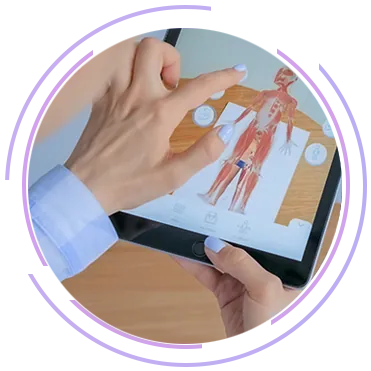
Medicine
AR training can be used in medicine to help train employees to learn about anatomy more in depth and practice surgeries without the risk of injuries or fatalities. Using AR for training has the potential to help save lives as surgeons will be more efficient in surgeries and better prepared. AR can also train employees in the medical field on how to efficiently communicate with patients about their healthcare issues and solutions. This can include showing patients the health issues they are experiencing through AR and potentially helping patients understand the issues better.

Retail
AR training can help new employees feel more prepared for when they are on the sales floor as AR can simulate different situations that they may experience. For instance, it can help employees be better prepared to handle situations like theft and train them to have the proper soft skills to ensure great customer interactions.

Military
AR can help train new military members through AR simulations to help them be prepared for dangerous and stressful situations. This can include providing first aid to the wounded, how to fly a plane, how to use different weapons, and how to navigate combat situations. AR can ensure that people in the military are properly trained and prepared for several different situations.
Examples of Virtual Reality in Workforce Training
Virtual reality can make workforce training fast, interactive, and fun, with the ability to transport employees into a completely virtual and interactive world. Some use cases are listed below:
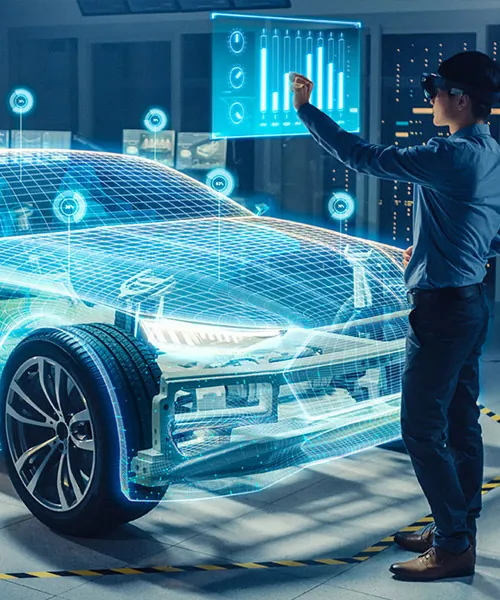
Automotive
VR can be used to help train new employees to assemble cars together or learn how to fix different issues on cars as well. Volkswagen uses VR to teach new employees how to assemble car parts, like doors and brakes. Also, they have an instructor in the room during training to give advice and points for improvement. This provides employees hands-on training and increases the effectiveness of the training.
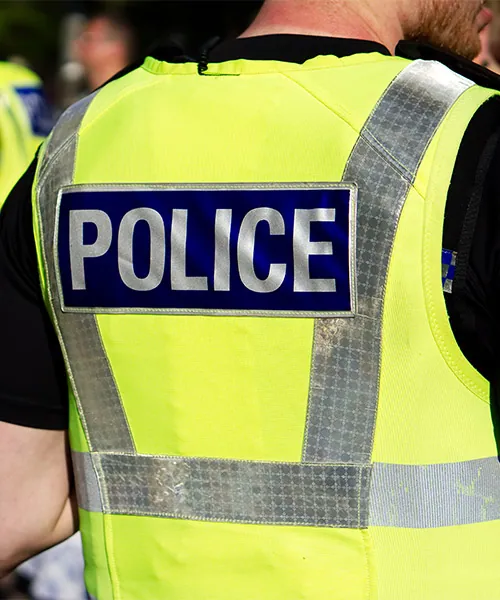
Emergency Services
AR can be used to help prepare police for different situations that they may experience, like life-threatening situations. The police force in Fort Myers, Florida, uses virtual reality to help officers operate better under pressure and prepare for the worst. The simulation puts officers in life-threatening situations and helps them try to deescalate the situation right away.

Offshore Jobs
Offshore jobs can be dangerous, especially if people are not properly trained. It is crucial to work safely on offshore jobs and be prepared for different situations that may occur. Thus, VR can help ensure that and help employees feel assured that they know what they are doing. For instance, BP, one of the oil and gas companies, uses VR training to help train new employees so they can practice important tasks and avoid the human era. It also helps them identify which part of the training has the most errors, so BP can improve the training and ensure employees are properly trained. VR training helps employees working on oil rigs to be safer and more efficient.
How XR Guru Helps to Improve Workforce Training
XR Guru helps to improve workforce training by providing organizations and employees with pre-made or customized packages through the XR Guru app to use to train employees. Employees can also use the app for extra training if they feel they need more training in a particular area, want to develop their career skills, or put themselves in a better position for career advancement in their field.
Contact Us
Frequently Asked Questions
1. Recruitment - With virtual reality, interviewing candidates will be easier. Companies can interview candidates from different parts of the world face-to-face using virtual meetings, where they can see and hear the candidate’s response and observe their body language.
2. Prototyping - Companies can use prototyping to assist in designing products and better analyzing functions of products. Thus, VR can help detect design problems and make modifications during the design process to avoid post-production complications.
Sources
- https://www2.deloitte.com/us/en/pages/deloitte-private/articles/technology-trends-middle-market-companies-survey.html
- https://www.osha.gov/data/commonstats
- https://fortune.com/2015/08/17/virtual-reality-hospitals/
- https://www2.deloitte.com/us/en/insights/industry/technology/how-vr-training-learning-can-improve-outcomes.html
- https://hbr.org/2021/01/how-companies-are-using-vr-to-develop-employees-soft-skills#:~:text=Today%E2%80%99s%20companies%20are%20facing%20a%20growing%20soft%20skills,soft%20skills%2C%20such%20as%20communication%2C%20teamwork%
